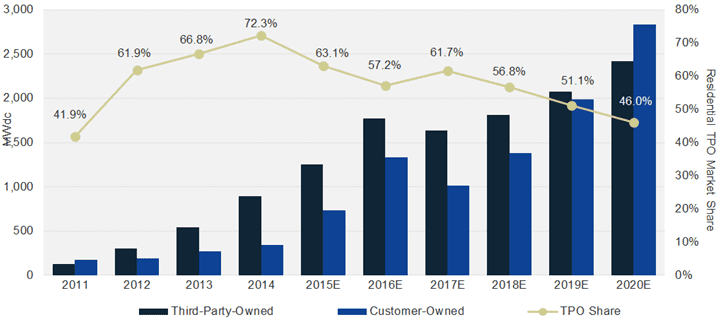Solar energy has become dirt cheap, and the market is flourishing. GTM research says the solar market should grow by 119 percent in 2016 compared to the previous year. The low prices are making a lot of rooftop residents jubilant, but the same can’t be said about the largest solar contractors in the states whose stocks have plummeted by more than 50 percent.
As much as 85% of the global solar energy was installed within the past five years, so you can get an idea of the kind of momentum we’re talking about. This year, an astonishing 16 gigawatts of solar will be installed in the U.S. Most of this capacity is comprised of utility-scale installations, but residential capacity (rooftop solar) has also grown a lot.
The residential solar market grew 66 percent year-over-year and, for the first time in history, eclipsed the 2-gigawatt mark in 2015. But because installation costs were slashed, this has caused ripples in the market. That’s because the traditional business model of the leading solar companies in the states, Solar City and Sunrun, involves leasing solar panels, inverters and all the gear you need to start generating energy.
This model worked very well so far. Customers would lease an installation over 20 years and pay less or at least as much as they did to their local utility. The business would make a nice profit on the interest. Everyone won.
Now, many new customers can afford to pay all the upfront costs themselves. In 2014, 72 percent of all rooftop solar was owned by a third-party, but by 2017 this figure should plummet to less than 50 percent, says GTM. This forecast is backed by the current market fluctuations. SolarCity’s stocks were down 53 percent in 2016 while Sunrun was down nearly 50 percent.
Companies need to adapt, and some do. SolarCity’s dropped its very popular MyPower solar loan program this year and is now running much shorter loan programs ranging from seven to ten years.











